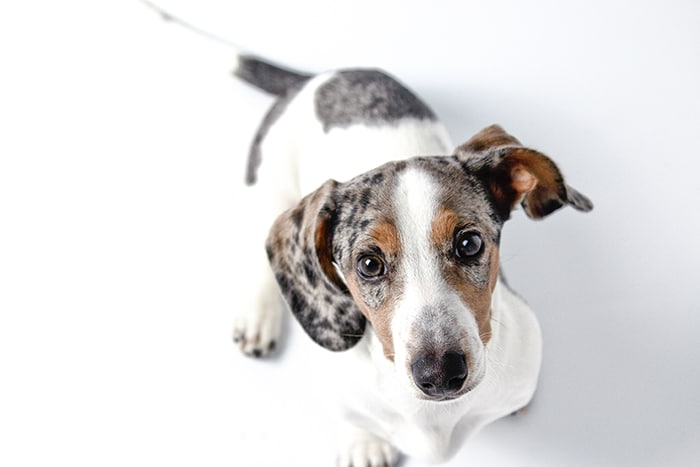
7 Simple Tricks to Prevent and Treat Dachshund Skin Issues
Is your Dachshund constantly licking and itching? Dachshunds are more susceptible to various food and environmental allergies than other dog breeds, which can cause multiple skin issues.
To Prevent and Treat Dachshund Skin Issues, you need to find the underlying cause and start using the ultimate secret weapon for itchy skin relief – find out below!
This page contains affiliate links and I earn a commission if you make a purchase through one of the links, at no cost to you. As an Amazon Associate, I earn from qualifying purchases.
Table Of Contents

Common Causes Of Skin Issues
Food and Environmental Allergies generally go hand in hand with many skin issues. If your Dachshund is suffering from flaky skin, itchy rashes, hair loss, small bumps, or scabs… it’s time to look for the real cause of their skin condition. Here are a few things that may be happening.
Bugs:
Scabies (aka: Mange): The most common cause of severe itchy skin is Scabies. Small red spots, caused by tiny mite bites, can be found on your dog’s ears, elbows or back legs. The tips of the ears can develop a crusty appearance. These little bugs are spread from other infected animals and their bedding.
Fleas: If your dog’s itching and biting around their tail or hindquarters, that is usually a sure sign of Fleas! Fleas are tiny, shiny little bugs that can jump like grasshoppers. If you don’t treat your dog for fleas, then Flea Allergy Dermatitis can set in. This is a very itchy and bumpy rash that develops around the dog’s arm pits and inner thighs.
Ticks: Blood sucking arachnids that love to attach to your dog and engorge themselves. These nasty critters can carry and spread several diseases when latching onto your dog’s skin. Luckily, Fleas and Ticks can be easily prevented with some powerful flea and tick control through your pet store or veterinarian.
Related Post: Scary Tick Facts Every Dachshund Owner Should Know
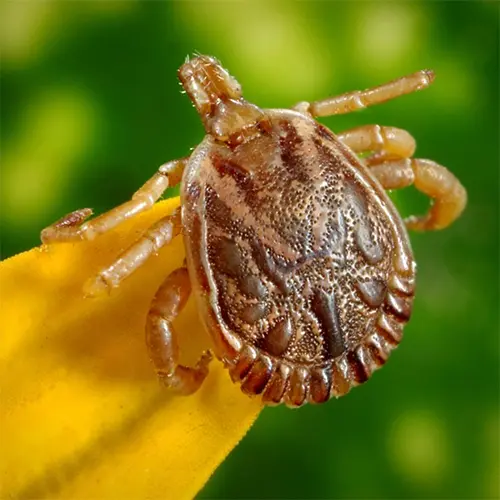
Food Allergies:
Processed dog foods include additives, food coloring, and preservatives which can cause many allergy issues. As far as ingredients: corn, wheat (gluten), soy, dairy, beef, and chicken are the biggest food allergy culprits.
Smaller dog breeds, like Dachshunds, have a harder time digesting starchy vegetables like corn and carrots. Unfortunately, corn is a very common filler ingredient in dog food.
Always check your dog food label and avoid foods that use starchy fillers in the first 5 ingredients.
Food Allergy Symptoms In Dogs
- Itching
- Sneezing
- Itchy paws
- Constant licking
- Hot spots
- Scaly skin
- Pink colored skin, Rash
- Elephant skin texture
- Eye discharge
- Red eyes
- Hair loss
- Ear infections
- Yeast infections on the skin or ears
Did you know that some Dachshunds can outgrow allergies that affect them as puppies?
As your dog grows, their immune system gets stronger. On the other hand, some allergies can unfortunately worsen with age and cause more severe reactions…I know, that’s not the greatest news!
My Dog’s Personal Experience
My dog, Artemus, was severely allergic to anything Beef Flavored…and we found out the hard way. We bought him a beef flavored bone from the store and the next day he was vomiting, licking and itching his paws. His face was severely bloated like a balloon. That was a pretty clear indication that beef was one of his allergies. We felt terrible!

What Is The Most Common Food Allergy In Dogs?
Top Dog Food Allergens (source: BMC Veterinary Research)

Seasonal Allergies:
If your dog tends to lick or itch during certain times of the year, they may have an Inhalation Allergy or Canine Atopy.
Symptoms include itching, rubbing their face, and licking their paws. This is caused by seasonal pollen. It is a lot like hay fever for people. Instead of respiratory problems, doxies are more affected with itchy and inflamed skin issues.
The Dachshund dog breed is more likely to be affected by seasonal pollen than other dog breeds. Think about it, Dachshunds are lower to the ground. Their bellies, paws, and arms are all exposed to grass, carpets, dusty floors, etc.. making it more likely to cause skin irritation or allergies.
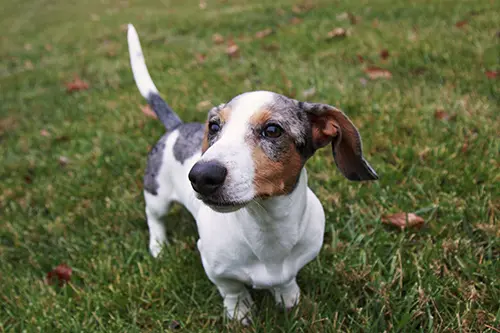
Swimming:
Pool chemicals, like chlorine, can cause your dog’s skin to dry out and have a nasty itch. Bacteria and parasites from natural water sources, like creeks or ponds, can cause itchy skin and disease.
Always rinse your Dachshund off with clean water after swimming in a pool or a natural water source. After my dogs enjoy a day at the creek, I always rinsed off their paws, bellies, and fur coats with the garden hose (as long as it’s not too cold).
Sunburn:
Don’t let your dog spend to much time out in the sun on those hot summer days. Just like humans, dog’s can get a painful sunburn too. This not only causes sore, itchy, and cracked skin…it can also lead to skin cancer. Luckily, there are some easy ways you can Protect Your Dachshund From The Sun.
How To Prevent Dachshund Skin Issues:

How To Treat Dachshund Skin Issues:
Look no further! The ultimate solutions (secret weapons) to your Dachshund’s Skin Issues can be found in this list.
Common Skin Conditions In Dachshunds
Acanthosis Nigricans:
Acanthosis Nigricans is a skin condition mainly found in the Dachshund dog breed. Usually, this disorder will show signs before the doxie’s first birthday. Symptoms include darkening and thickening of the skin, bacterial skin infections, and hair loss.
The skin may feel greasy to the touch or appear flaky. This condition may spread all over the Dachshund’s body overtime. If your Dachshund has this condition, your vet can prescribe special dog shampoos and medications to treat the symptoms.
Yeast Infection:
Unfortunately, that constant licking your Dachshund is doing to his paws or skin can make them more susceptible to a yeast infection.
What is a yeast infection of the skin? Also called Malassezia Dermatitis, a yeast infection of the skin can look like a pink rash, which can then develop into thickened elephant skin.
The yeast thrives in a warm and wet environment. Unfortunately, a yeast infection causes more itching and can turn your dog’s skin crusty and even have a stinky smell to it. Consult your vet for medicated dog shampoo and anti-fungal medication to help get rid of the yeast infection.

Hypothyroidism:
Older Dachshunds can develop Hypothyroidism. This is when the thyroid glands aren’t producing enough hormones. Symptoms include itchy and dry skin, frequent skin infections, thickening and discoloration of the skin, and hair loss.
Other symptoms include ear infections, lethargy, and even changes in their behavior. Consult your vet, they do have treatments that can help you dog with this disease.
What Is My Dog Allergic To?
First, Try A Dog Food Switch: If you believe your doxie may be allergic to a certain meat like beef or chicken, check out some of the dog foods that have duck, salmon, turkey, and venison instead.
Look at the Dog Food Advisor website for a list of recommended limited ingredient and hypoallergenic dog foods available.
It is a good idea to switch up your dog’s food once in a while to ensure they are getting the proper amount of nutrition that different dog food recipes provide. Learn how to change your dog’s food the right way to avoid an upset stomach.
Visit the Vet: In my opinion, the most accurate way to find out what ingredients your dog is allergic to is to have them tested at the vet. Generally, your vet will do a blood or a patch test to find out what is bothering your poor pup. Your vet can then formulate a special allergy medication for your dog to help with their skin issues.
Related Post by Canine Journal: Dog Allergy Testing: How Much Does It Cost And Is It Worth It?
What Relieves Your Dachshund’s Skin Issues? Let Us Know In The Comments.
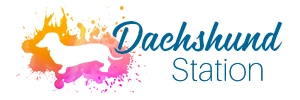

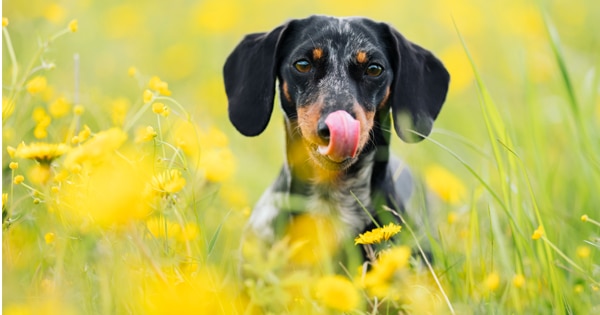

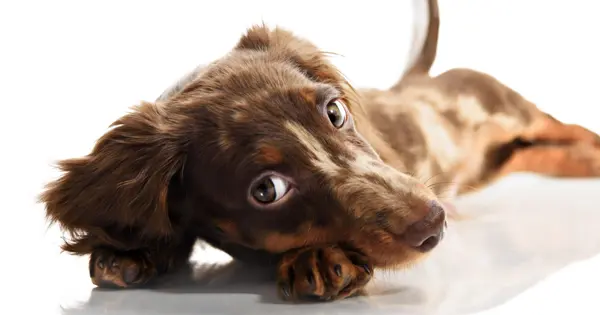
My five-year-old mini dachshund has recently developed a hives like rash on his chest area that is lumpy and some of it has become puss filled. he has seen the vet and had a successful course of antibiotics for a week however as soon as the antibiotics stopped he has the rash back. he is now back on the antibiotics but the vet has no idea what is causing the rash. could it be grass pollen? any help much appreciated…
Hi, oh no! I’m so sorry to hear your poor doxie is having some trouble. Well, if it was me, yes, I would question the grass. Do you get your grass chemically treated or are there a lot of ‘biting’ bugs around? This is the season for pollen in the trees, grass, and flowers.
Here’s what to do: When your doxie goes outside, make sure to wipe him down when he comes back in (belly, chest, paws, arm pits) with a gentle soft cloth and a small amount of gentle dog shampoo / water bubble mixture. Then, rinse and dry him off.
Info from a website about hives: “Friction, sunlight, heat, exercise, stress, and genetic abnormalities may cause or intensify the rash. Hives may develop after inhaling or consuming allergens. Hives can be seen while a dog is in estrus (“in heat”) or seen in puppies with intestinal parasites (“worms”).” ~ Merk Manual’s Website.
I would also look into changing his dog food to see if that helps. It may be an allergy that he has developed from an ingredient in his dog food. Also, take a break from dog treats, and of course – no table scraps.
Check out Dr. Jones (Veterinary Secrets) – He is on Facebook and YouTube, he has lots of natural remedies that may help your doxie. Best of luck, I hope this helps you out.
hi my 14 month old dachshund has become very agressive towards other dogs and people even children / What do you recomend
Hi There! I would love to help. A dachshund that is acting aggressive may need more socialization with others (animals/people) – but done gradually so no one gets hurt. Also, this is when the hormones start to rage at this age. Now that your dachshund is over 1 years old, is a good time to get them fixed, if you choose to.
Please Read this: How To Stop Dachshund Behavior Problems
Towards the bottom of this post, it has some tips on what to do with an aggressive dachshund. Also, take a look at the many doxie parent comments having the same issue. I also like to recommend Zak George’s dog training videos regarding help with dog aggression.
My cream longhair doxie came up with a light purple area on her lower belly one day the now it’s darker purple and under her neck arm pits throat and genitalia any ideas what caused it? She’s on Purina pro plan sensitive skin and stomach formula that’s 27% protein 10% fat oh and she’s been shaved except for tail and ears Taking her to get March 10
Hi Shannon, unfortunately, I’m not familiar with that condition. Definitely contact your vet to see what it is.